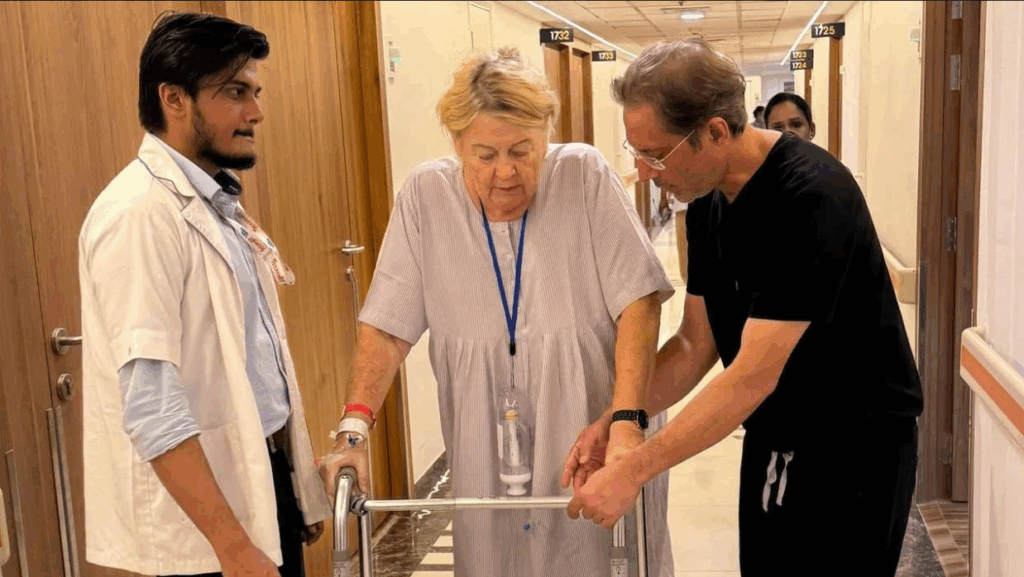Claire Olsen, a 65-year-old nurse from New Zealand, faced two difficult choices for her double hip replacement—wait up to five years in the public health system or pay $80,000 at a private hospital. With her mobility severely affected by arthritis and no relief in sight, she began exploring alternatives abroad.

Successful Surgery in Mumbai at One-Fourth the Cost
Olsen decided to travel to Mumbai, where she underwent robot-assisted hip replacement surgery for $20,000. The operation was performed by Dr. Mudit Khanna, an experienced surgeon trained in the UK, Germany, and the US. She was walking with crutches just two days after surgery and back home in three weeks, pain-free.
Faster Recovery with Robotic Technology
Olsen praised the robotic surgery technique for being minimally invasive and leading to quicker recovery. She noted that in New Zealand, patients often take weeks or months to recover, whereas she was walking unaided within 20 days and enjoying regular activities like shopping shortly after discharge.
Impressive Hospital Standards in India
Olsen was accompanied by Jackie Brown, a friend and travel agent, who was surprised by the high quality of care. She described the Mumbai hospital as the best she had seen, with clean facilities, regular room maintenance, attentive nurses, and a proactive surgical team.
Limited Robotic Surgery Access in New Zealand
Robot-assisted hip replacements are still rare in New Zealand. The first such surgery was done in 2023 by surgeon Anthony Maher. Although he acknowledges the benefits of robotic procedures, Maher said only one robot is available in the public health system. Many patients now opt to self-fund their procedures due to long wait times and limited insurance options.
Surgeons Urge Careful Planning for Medical Travel
Maher advises anyone considering surgery abroad to research thoroughly—verify the surgeon’s credentials, understand the equipment used, and confirm the hospital’s standards. He confirmed that India uses top-tier surgical robots like the Mako, which was used in Olsen’s case. He also admitted that the $20,000 price tag for robotic surgery in India is far below New Zealand’s market rate.
Government Responds to Rising Patient Outflow
New Zealand’s Health Minister Simeon Brown acknowledged the delays and said steps are being taken to cut down wait times, including working with private providers. He said surgical targets have already been exceeded, and new plans will be rolled out soon to further improve access.
Olsen Encourages Informed Medical Travel
Olsen advises others facing similar challenges to consider overseas options but only with proper research and support. She emphasized that India’s private hospitals are clean, modern, and efficient. In her view, it’s New Zealand’s public system that now feels outdated.
“Don’t be afraid,” she said. “India gave me my life back, and it was better than anything I could get at home.”
